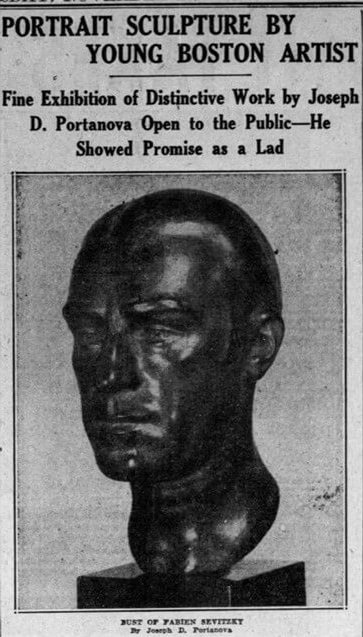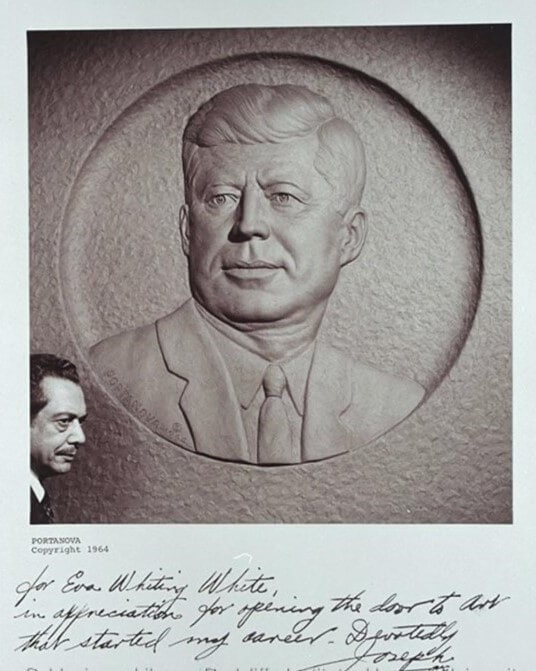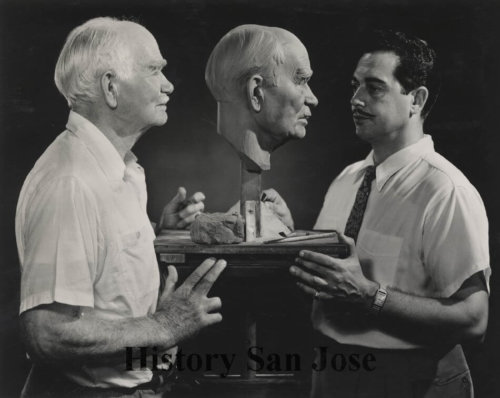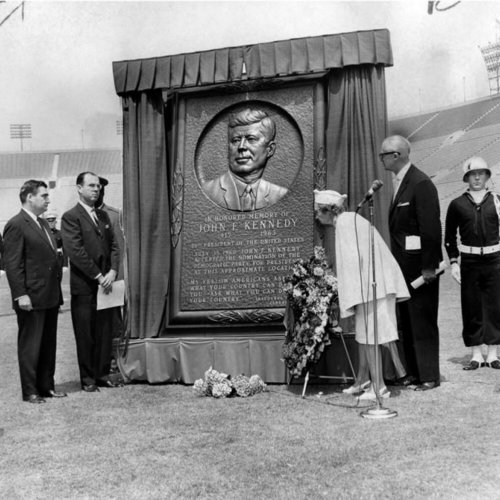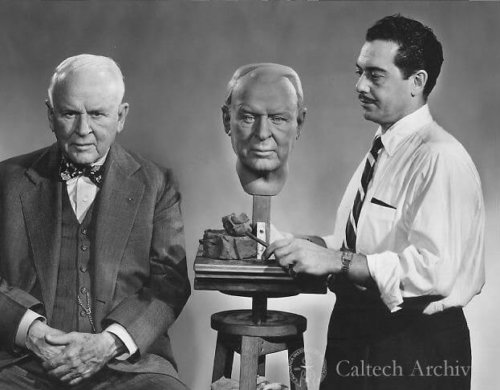Joseph D. Portanova
Joseph D. Portanova was the child of Italian immigrants who settled in the West End. He was introduced to art by Eva Whiting White at the Elizabeth Peabody House and went on to become a prolific, nationally known sculptor.
Joseph Dominica Portanova was born in 1909 in Boston. His parents, Maria Giuseppa Lotrecchiano and Vitomaria Portanova, came to Boston from Avellino, Italy and settled in the West End. Vito was a barber who owned a shop on Causeway Street. Joseph was the oldest of eight children (Michael, Erino, Adelina, Grace, Vito, Angelina, and Adelmo). The family, which included Joseph’s grandmother, first lived in the Charlesbank Homes, moved to Charles St., then to Phillips Street, and later to Cedar Street.
From a young age, Joseph took art classes at the Elizabeth Peabody House where his younger siblings attended kindergarten. Indeed, he credited Eva Whiting White, Director of the Elizabeth Peabody House for nearly three decades, with “opening the door to art that started [his] career.” He was introduced to sculpting at the age of ten. Joseph graduated from Boston Trade School in 1926 and worked to help support his family while making art. In his early twenties, he became known as a gifted portrait sculptor and was commissioned to create busts of Dr. William C. Crawford, painter John Lavalle, orchestra conductor Fabien Sevitsky, Arthur Fiedler, and others.
In 1934, Joseph and his brother Michael left Boston for opportunities in California. Within ten years, several members of the Portanova family had relocated to California. Soon after arriving in the Los Angeles area, Joseph began work as a radio cabinet designer. He continued as a designer for the Hoffman Electronics Corporation and the Teledyne Packard Bell Corporation for 30 years. This work allowed him to meet and sculpt a portrait of inventor and electronics pioneer Lee de Forest in the early 1950s.
Following a string of commissions and prize-winning works, Joseph was asked in 1964 to create the John F. Kennedy memorial plaque for the Los Angeles Memorial Coliseum. The unveiling of the plaque marked the approximate spot at the Coliseum where Kennedy accepted the Democratic nomination for President in 1960.
In 1968, accomplished symphony harpist Mary Spaulding proposed that Joseph make the memorial bust of her late husband Fabien Sevitsky. Dr. Sevitsky and the sculptor had remained in touch after Joseph created Sevitsky’s first portrait bust back in Boston. Through their mutual friend, the composer William Grant Still, Mary and Joseph became friends and were married in 1969. After marrying, the couple lived in Palm Springs.
Joseph Portanova died at the age of 69 in 1979. His work can be found in many private and museum collections, including the National Portrait Gallery, the Los Angeles Memorial Coliseum, and California Institute of Technology.
Article by Janelle Smart Fisher, edited by Grace Clipson.
Sources: The Boston Globe, November 14, 1933; The Boston Globe December 7, 1934; Los Angeles Public Library; Mary Spaulding Portanova, “Music Is Beauty,” The Black Perspective in Music 3, no. 2 (1975): 196–98; The West Ender, letter from Adeline Portanova Lavalle, December, 1993.


